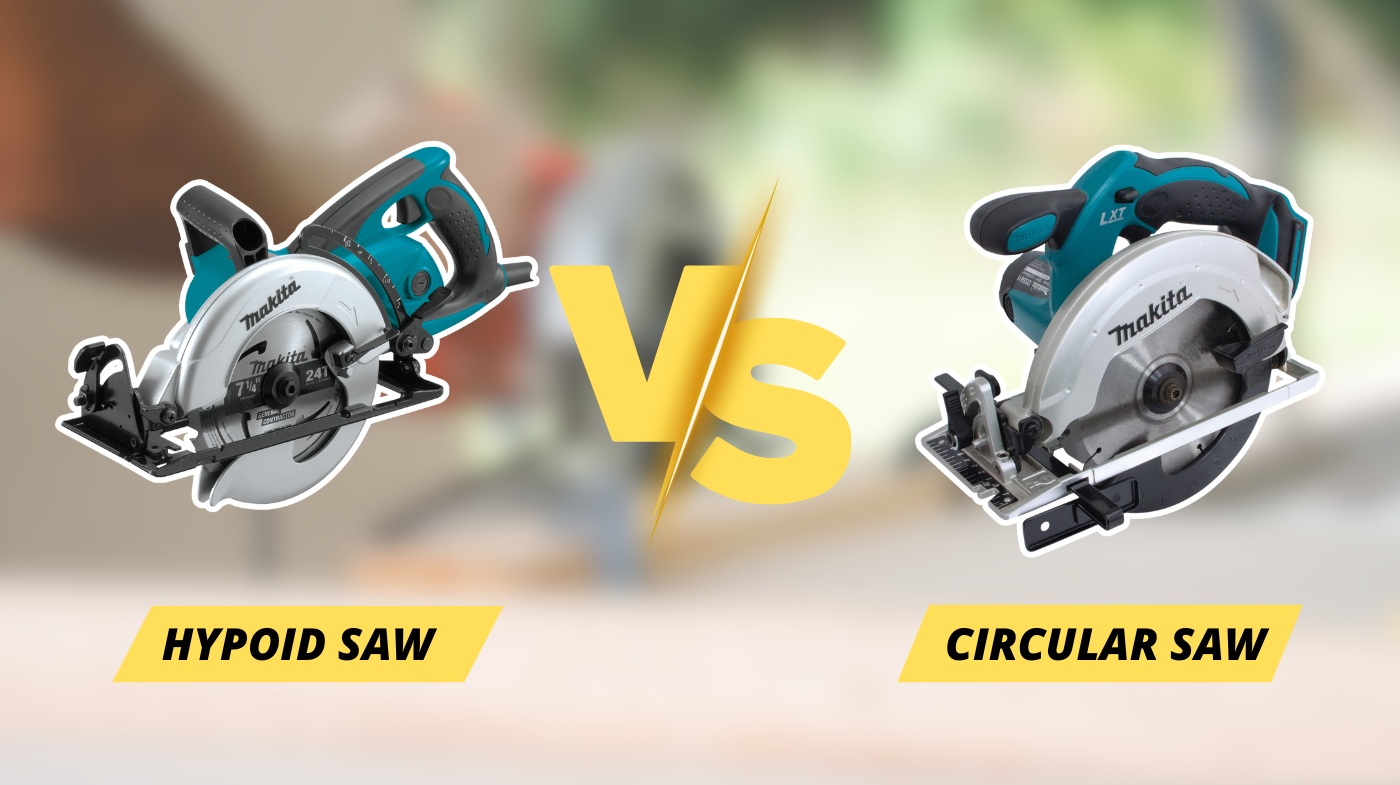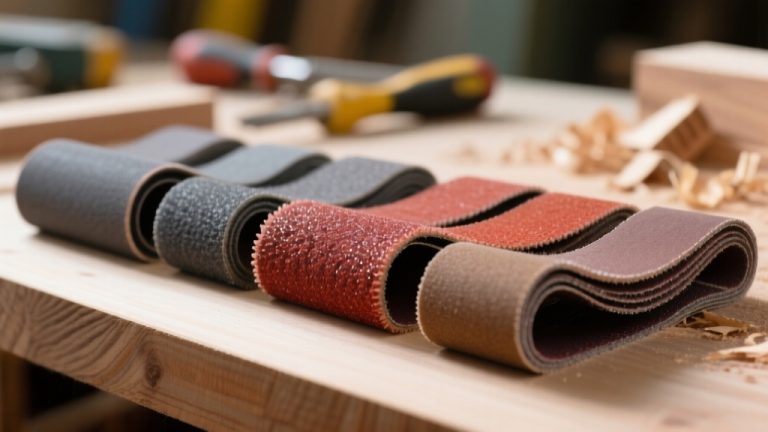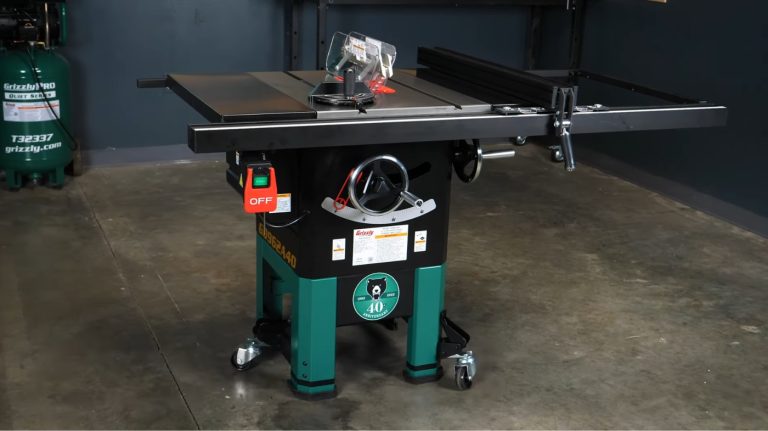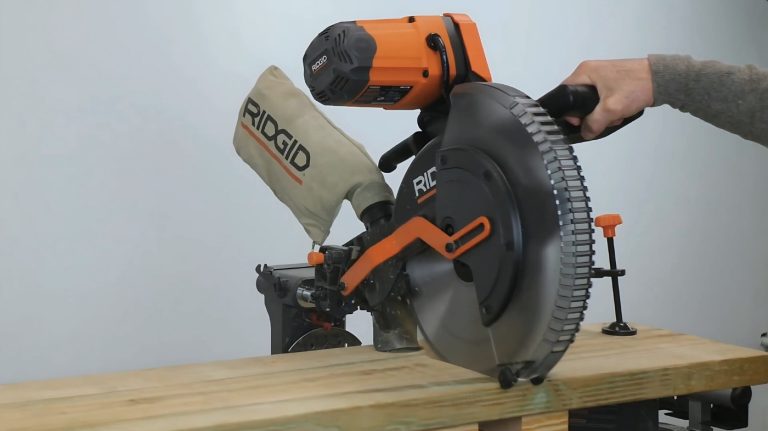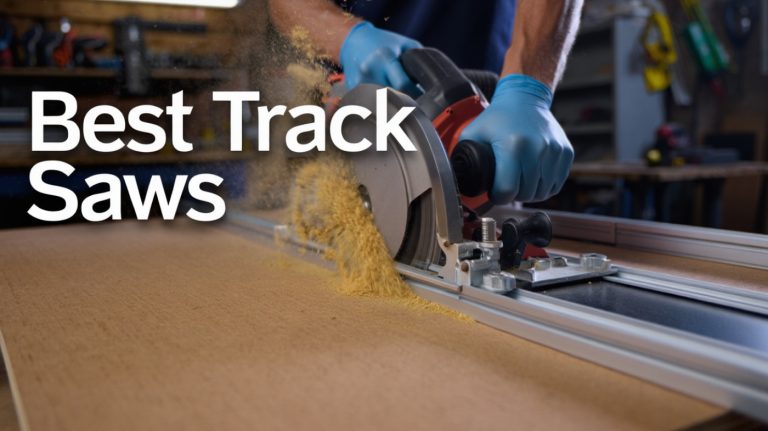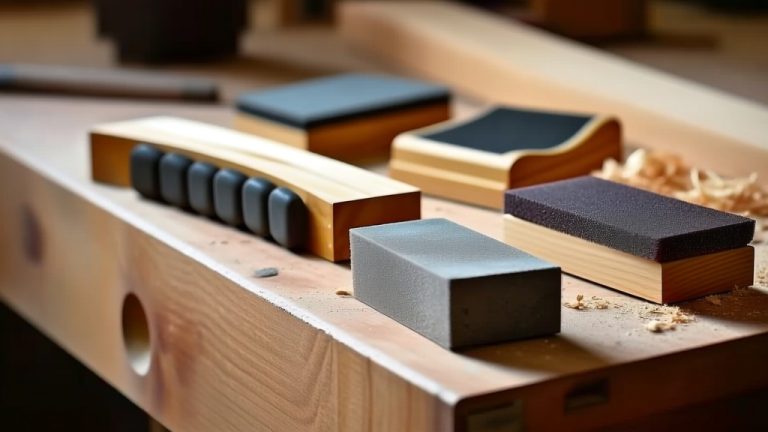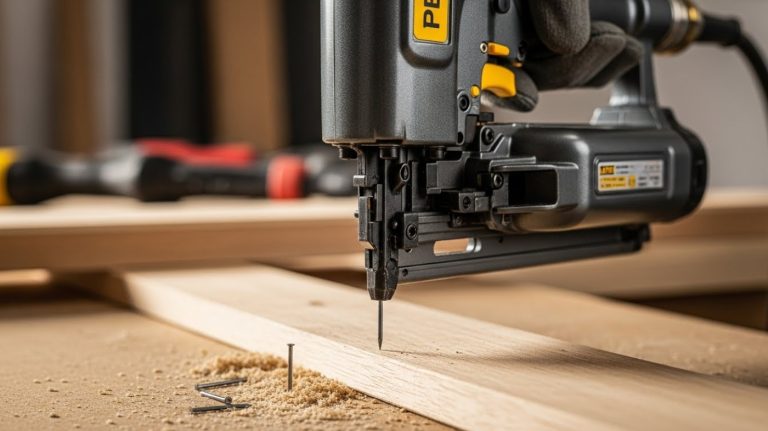Hypoid Saw vs Circular Saw: Key Differences Explained
You’ll find hypoid saws excel in heavy-duty, high-torque cutting with sealed, oil-bathed hypoid gears for cooler, longer-lasting performance and less maintenance.
They’re heavier with rear handles for stability during tough cuts. Circular saws are lighter, more portable, and better for quick, precise jobs with top-mounted handles for maneuverability but need more upkeep due to exposed components.
Choosing depends on your cutting demands and comfort needs—exploring deeper will reveal which fits your project best.
- Power – Brushless motor provides 5500RPM maintaining speed under load
- Runtime – 330 crosscuts in 2×4 (pine)
- Capacity – 7-1/4′ Blade provides 2-9/16′ Cutting Capacity at 90 degrees
- Efficient hypoid gears deliver more power and greater surface contact than conventional worm drive…
- Powerful 15 AMP motor for increased productivity.
- Oil bath technology and sealed gear housing for less maintenance.
Key Takeaways
- Hypoid saws feature sealed, oil-bathed hypoid gears offering higher torque and longer gear life than typical circular saws with exposed components.
- Circular saws are lighter and more portable, ideal for quick, precise cuts and DIY projects, while hypoid saws suit heavy-duty, prolonged use.
- Hypoid saw handles are positioned rearward for better stability and control, whereas circular saws have top-mounted grips for agility in tight spaces.
- Hypoid saws run cooler and quieter due to heat-treated steel gears and sealed housings, reducing maintenance compared to worm-drive circular saws.
Hypoid Saw vs Circular Saw: Key Comparison Table
| Feature | Hypoid Saw | Circular Saw |
|---|---|---|
| Power & Torque | Higher torque, better for heavy-duty cutting | Higher RPM, less torque under heavy loads |
| Weight | Heavier (13-14 lbs), more stable | Lighter (10-20 lbs), more portable |
| Handle Position | Rear-mounted handle for better control | Top-mounted handle for maneuverability |
| Gear System | Sealed, oil-bathed hypoid gears | Exposed components, worm drive typical |
| Maintenance | Low maintenance, sealed design | Higher maintenance, requires oil changes |
| Noise & Vibration | Quieter operation, less vibration | More vibration and noise |
| Best Use Cases | Heavy-duty framing, thick materials, professional use | DIY projects, quick cuts, tight spaces |
| Durability | Heat-treated steel gears, longer lifespan | Standard materials, more frequent wear |
| Operation | Cooler running, continuous cutting capability | Standard operation, better for intermittent use |
| Cost Consideration | Higher initial cost, lower long-term maintenance | Lower initial cost, higher maintenance needs |
Gear Mechanisms in Hypoid and Circular Saws
While both hypoid and circular saws share the goal of efficient cutting, their gear mechanisms differ fundamentally in design and performance.
Hypoid saws use precision-machined gears positioned at an angle, allowing the motor to sit behind the blade. This angled, oil-bathed gearbox provides greater surface contact, resulting in enhanced torque, quieter operation, and reduced vibration.
The hypoid gear features perfect harmony between two gears, ensuring smooth and precise power transfer. Additionally, many hypoid saws incorporate magnesium construction to achieve a lightweight yet durable design.
You’ll appreciate the sealed design that eliminates maintenance and protects against contaminants.
In contrast, traditional circular saws typically employ worm drives with a worm gear meshing a brass gear, which increases wear and requires periodic oil changes.
Hypoid gearboxes also integrate premium materials like magnesium to reduce weight without sacrificing durability, offering you a compact, balanced tool optimized for reliable power transfer and long-lasting performance.
Comparing Power and Performance Capabilities
Because hypoid saws position the motor parallel to the blade and utilize an advanced gear mechanism, they deliver higher torque and greater power efficiency than traditional circular saws.
You’ll notice hypoid saws excel in cutting dense or wet materials, maintaining consistent power without binding or stalling. Their sealed motor housing reduces maintenance, while the gear design lowers vibration and noise, improving operational smoothness and user comfort.
Additionally, their design often results in reduced noise levels compared to other saw types, enhancing user comfort. Although hypoid saws operate at lower RPMs, their torque compensates, offering efficient cutting speeds and deeper bevel cuts.
Additionally, the hypoid gear drives are designed for heavy-duty use and continuous cutting, with steel gears that provide long-lasting durability. This makes them well-suited for heavy-duty framing and demanding construction tasks.
In contrast, sidewinder circular saws offer higher RPM but less torque, making them less efficient under heavy loads.
Differences in Weight and Handling Features
When choosing between a hypoid saw and a circular saw, you’ll notice differences in weight that affect handling and control.
Hypoid saws typically balance lighter materials like magnesium with ergonomic handle designs to reduce fatigue during extended use. SawStop and Powermatic models demonstrate how weight and mobility influence user experience in woodworking tools.
Makita’s use of magnesium components in both saw types results in lighter weight, improved ergonomics, and a rigid platform.
Weight Comparison
A key factor you’ll notice when comparing hypoid saws to circular saws is their weight and how it affects handling. Hypoid saws, like the Makita 5477NB at 14.3 lbs net, tend to be heavier due to their robust hypoid gear systems.
The hypoid gear technology provides greater power consistency and durability during heavy-duty cutting tasks. The Makita 5377MG mitigates this weight slightly using magnesium components, dropping to 13.2 lbs without sacrificing durability.
Circular saws vary widely, generally between 10 and 20 lbs, often lighter but less powerful. This weight difference influences stability and portability—heavier hypoid saws offer greater cutting stability and power, while lighter circular saws are easier to transport and maneuver.
Proper maintenance and operational techniques can further enhance the performance and longevity of either saw type.
Handling and Ergonomics
Although both hypoid and circular saws serve cutting tasks efficiently, their handling and ergonomic features differ markedly due to design and weight distribution.
You’ll notice hypoid saws have handles positioned farther back, improving control and resistance to kickback during sustained cuts.
Circular saws offer a more compact grip above the blade, favoring quick maneuvers. Proper maintenance and lubrication are essential to ensure smooth operation and prolong tool life.
Key differences include:
- Weight and Balance: Hypoid saws concentrate weight rearward for stability; circular saws center weight near the blade for agility.
- Vibration and Fatigue: Hypoid saws reduce vibration via sealed motors, lessening fatigue; circular saws vibrate more, suitable for lighter tasks. Additionally, hypoid saws are known for their sealed motor housing, which contributes to reduced maintenance and smoother operation.
- Grip and Handle Design: Hypoid saws feature robust, textured grips to manage torque; circular saws emphasize ergonomic grips for repetitive, rapid cuts. Selecting the right cutting speed and feed rate can also impact user comfort and tool efficiency.
Maintenance Requirements and Durability Factors
You’ll notice hypoid saws benefit from sealed gear housings that reduce contamination and extend maintenance intervals.
Unlike circular saws with exposed components requiring more frequent cleaning, this sealing substantially lowers lubrication needs and contributes to longer gear life under heavy use.
In addition, hypoid saw gearboxes typically use grease instead of oil, which remains effective over many years and requires only periodic refreshing after extensive use, helping maintain gear longevity.
Gear Sealing Benefits
When evaluating gear sealing benefits, you’ll find hypoid saws outperform circular worm-drive saws in maintenance demands and durability.
Hypoid saws use sealed bearings with permanent lubrication, eliminating oil changes and reducing contamination risks.
Their carbonitride heat-treated steel gears operate cooler, extending service life. This design also helps reduce friction and wear, which further contributes to the longevity of the saw.
In contrast, worm-drive saws rely on oil-bath gearboxes needing regular oil changes and break-in periods due to softer bronze gears.
It is recommended to perform the first oil change after approximately 10 hours of use to maintain optimal performance and longevity. Oil change intervals
Key gear sealing benefits include:
- Sealed bearings in hypoid saws maintain consistent lubrication, preventing gear failure and reducing maintenance complexity.
- Effective seals block moisture and dust, lowering premature wear risk.
- Hypoid gearsets run cooler, minimizing heat-related degradation and extending durability.
Maintenance Frequency Comparison
Building on the gear sealing advantages of hypoid saws, their maintenance frequency clearly outperforms that of worm-drive circular saws.
Hypoid saws feature sealed, heat-treated gears operating in an oil bath, which markedly reduces the need for frequent lubrication and gear oil changes.
Additionally, the magnesium components contribute to a lightweight design that enhances user comfort during extended use.
In contrast, worm-drive models demand regular oil replacements to prevent gear wear and maintain performance.
Both saw types require routine inspection of blades and guards to avoid damage, but hypoid saws’ internal lubrication system lessens your maintenance duties. Regular maintenance of blade quality and maintenance is essential to ensure optimal cutting performance and safety.
The greater surface contact and magnesium components in hypoid saws enhance gear durability, meaning you’ll spend less time on upkeep.
Longevity and Wear
Although both hypoid and circular saws serve similar cutting functions, their longevity and wear characteristics diverge markedly due to differences in gearbox design, material quality, and enclosure protection.
Hypoid saws utilize oil-filled gearboxes with hypoid gears, ensuring quieter operation and prolonged gear life. They’re built with heavy-duty steel components and feature sealed motor housings, protecting internal parts from dust and moisture.
Hypoid saws generally do not require relubrication, simplifying maintenance compared to worm drive saws. Their design also contributes to reduced wear and tear, enhancing overall durability.
Circular saws, often lighter with plastic parts and open motors, face accelerated wear under harsh conditions.
Key factors affecting longevity include:
- Gearbox lubrication: oil-filled hypoid gearboxes extend durability versus typical circular saw designs.
- Build materials: steel hypoid components resist damage better than plastic-heavy circular saws.
- Enclosure protection: sealed hypoid housings reduce contamination and maintenance frequency.
Best Use Cases for Hypoid and Circular Saws
Because each saw type offers distinct performance characteristics, choosing between a hypoid and circular saw depends largely on the demands of your project.
If you’re handling heavy-duty cutting tasks—like timber framing or gang cutting through thick or engineered wood—a hypoid saw’s enhanced torque, power, and stability will serve you best.
Its quieter operation and reduced vibration also make it ideal for prolonged professional use. Additionally, hypoid saws tend to be heavier and more durable, making them suited for demanding applications where longevity is important.
Conversely, if your work involves lighter materials or tight spaces, a circular saw excels. Its lightweight design and portability allow for easy maneuverability, especially in confined areas.
Cordless options and left-blade configurations further enhance circular saw versatility, making it perfect for general DIY projects and quick, precise cuts where convenience is paramount.
Ergonomics and User Comfort in Saw Design
When you choose between hypoid and circular saws, the ergonomics and user comfort hinge largely on weight, balance, and handle design.
Hypoid saws are heavier, using mass for stability and control during long cuts, with rear handles that improve leverage and kickback resistance. This design reduces vibration and noise, lowering hand fatigue but can tire you during prolonged use.
Additionally, hypoid saws feature sealed internal gears that provide more power and smoother operation but contribute to their heavier weight. Proper maintenance such as regular inspection can help keep these saws operating efficiently and safely.
Circular saws, being lighter with top-mounted handles, offer superior maneuverability and quicker, one-handed operation in confined spaces.
Their lower blade-to-handle distance enhances visibility for precision work. Control adjustability also impacts comfort; hypoid models feature robust, accessible levers and sealed gear cases for smoother operation and less maintenance.
Frequently Asked Questions
Can Hypoid Saws Be Used for Cutting Metal or Only Wood?
You shouldn’t use hypoid saws for cutting metal because they’re specifically designed for wood. Their powerful motors and hypoid gears optimize smooth, high-torque wood cutting but don’t handle metal well.
Using them on metal risks damaging the blade and the tool, plus safety hazards. For metal, you’d want specialized metal-cutting saws or angle grinders with proper blades. Stick to wood with hypoid saws to guarantee safety and tool longevity.
Are Hypoid Saws Compatible With Standard Circular Saw Blades?
Think of a hypoid saw as a powerful engine that can run on standard fuel—you can use most standard circular saw blades with it, especially if they match the size, like 7.25″.
However, you’ll want to consider the blade’s material and thickness since hypoid saws demand blades built for high torque and durability. Always check your saw’s specs and manufacturer recommendations to guarantee the blade fits securely and performs at its best.
How Do Hypoid Saws Perform in Wet or Outdoor Conditions?
You shouldn’t use hypoid saws in wet or outdoor conditions without protection, as moisture risks electric shock and damages internal components like motors and circuits.
Always operate the saw in dry environments to maintain safety and performance. If you must use it outdoors, make sure it’s covered, and you’re not grounded.
Regular maintenance is vital to prevent moisture-related damage, but it won’t eliminate hazards from wet exposure or unsafe conditions.
Do Hypoid Saws Require Special Safety Gear Compared to Other Saws?
You’ll want to wear eye protection and a dust mask during any saw operation since debris causes 90% of saw-related injuries.
Hypoid saws don’t demand special gear beyond this standard equipment, like non-skid shoes and hearing protection, but you must make certain the lower guard functions properly.
Keep hands clear of the blade and secure your workpiece firmly. Following these precautions keeps you safe and your cuts precise.
What Brands Are Most Reputable for Manufacturing Hypoid Saws?
You’ll find Makita and SKILSAW leading in hypoid saw manufacturing due to their robust 15 AMP motors, durable hypoid gearing, and sealed gear housings.
Makita offers a broader lineup, focusing on durability and power, while SKILSAW provides lighter models known for reliability. Bosch and DEWALT are respected but less focused on hypoid drives.
Choose Makita or SKILSAW for professional-grade performance and proven longevity in demanding construction tasks.
Cutting to the Chase: Choose the Saw That Suits Your Craft
When weighing your woodworking workhorses, you’ll find hypoid saws harness heavy-duty power with heightened handling, while circular saws combine compact convenience and consistent cutting.
Considering cost, comfort, and care, you can confidently choose the cutter that complements your craft. By balancing performance and practicality, you’ll master your materials with maximum efficiency and minimum effort. Choose wisely—your saw should serve your skill, not strain it.
- Magnesium components create a lightweight saw (13.2 lbs.) that is well balanced and job site tough
- Oil bath technology is created with a built-in fan and sealed gear housing to ensure 100% oil…
- Large cutting capacity (2-3/8″ at 90°) with positive stops at 22.5°, 45° and 51.5°
- 13 Amp motor for more power and performance than the SKIL 5380
- 15% weight reduction vs. SKIL 5380, reduces user fatigue
- 51-Degree bevel with positive stops for great cut capacity
Last update on 2025-12-27 / Affiliate links / Images from Amazon Product Advertising API

